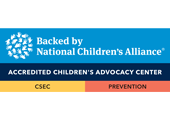How Sensationalism in Social Media Hurts Child Victims
October 17, 2025
In 2018, during a press tour for his movie “Eighth Grade,” comedian Bo Burnham made a statement that in the modern era, with no new land to colonize, corporations now seek to “colonize human attention” through social media. This concept of human attention has been explored and exploited by every means of media throughout every stage of technological evolution.
From the printing press to radio, early TV, the 24-hour news cycle, and now social media, the desire to attract and keep human attention has changed its methods and strategies. Factual and standard reporting is now often overlooked, while sensational headlines and extreme photos have become the standard. With these changing standards, the “adapt or die” mentality has found its way into every media company. Even once reputable and unbiased organizations have taken on this more extreme approach in reporting.
At the same time, a new phenomenon has come to the fore. The additional concept of “citizen journalists” has become a widely accepted and replicated format in the social media spheres, with unchecked reporting on “juicer” stories. Unfortunately, this includes cases involving child victims of crime, and in particular sexual abuse and exploitation. While we have discussed the media’s role in providing factual and trauma-informed reporting, the sensationalism of reporting on cases involving children by social media content creators is an issue we need to bring to light.
The structure of social media platforms creates a recipe for disaster set against effective and trauma-informed reporting of these types of cases. Successful social media thrives only through engagement. Following an extreme or sensational title, there is no better place to understand the issues we’re describing than by checking the comment section. It is the place people regularly gravitate towards before they’ve completely read an article or finished a video, a forum most often awash with critical comments and vile attributions. Those who are consuming social media are actively looking for the summary, the argument, or an opportunity to join the argument without fully understanding the issue. Repugnant attributions to children being willing participants in clear cases of exploitation or assault are not uncommon in these spaces. This is called victim blaming, and it is dispensed in a callous and unfeeling manner with real consequences.
What is the long-term effect of too much information? One of the effects is the need to be first, not even to be true anymore.”
However, shutting off this proverbial free-for-all is something that can’t be done, without sacrificing the curated algorithms needed to get the post in front of people. While people clicking links and following to longer-form content helps, a frenzied comment section is what leads to increased exposure. As such, a controversial comment section is a busy comment section. This will not only attract the post to those who write these comments (often referred to as rage-baiting) but those who engage in the fiery defender response.
Adding insult to injury, when the algorithms which curate the content for users identify this is what people “want” to see through their engagement, they will be shown more of this type of content. Content will then (by the nature of the platform) need to become even more extreme to garner the same level of attention earlier posts received. Viewers become desensitized to what they are seeing, hearing, and reading, and the minimization of the victim, – as a human being, as a child – from the entire equation happens quickly.
This lack of empathy creates a culture of consumption, without question. The story is all too often presented with shocking headlines, controversial engagement, and the creation of conflict in public spaces. And as such, stories to engage and enrage the viewership are created with often nothing more than a headline, a few quotes of limited detail, a request for engagement, and posted in local community forums to let the games begin.
As Denzel Washington stated in a 2016 soundbite, “What is the long-term effect of too much information? One of the effects is the need to be first, not even to be true anymore.” Unfortunately, the rush to be first for reporting cases involving child sexual abuse and exploitation has taken priority over the important questions about what information is being reported, and whether it serves the public interest for safety.
Social media reporting on active cases of child sexual abuse often goes far beyond the scope of public’s need-to-know. This has included intimate details of sexual abuse and assault, children’s statements in police reports or court reporting, and the over-description of the relationship between alleged perpetrators and victims. We have seen cases where photographs of children who may have been victims in cases of family violence have been pulled from private social media accounts and rebroadcasted. What’s more, there have been instances where information included in reports went so far as to identify victims through association or unnecessary ancillary details.
The trickle-down effect of individuals with too much time, the desire for attention, and a social media account has created an unintentional secondary market in the revictimization of the defenseless. Our cultural fascination with the traumatization of others has caused the over-exposure of a victim’s experience and reduces the chances for a victim to be empowered when they are placed under a microscope. When other survivors, who have not yet had the opportunity to step forward to ask for help, see this, read the vitriol in the comments, and see the exposure of private and traumatic experiences as the casual hobby of others – they will not step forward.
Additionally, when the reporting of child sexual abuse and other crimes against children only focuses on the most heinous crimes with the most vulgar descriptions of victimization, it minimizes the experiences of others. The comparison of victimization creates a culture by which those who, in their own experiences, have been a victim of an individual or repeated instance of crime may believe that they are not worthy of help and support. Or, and to a certain degree, worse – they may have their experience shrugged off as others compare their stories to those they have seen in social or news media.
Being a victim of abuse is a subjective trauma – no one can understand the feelings or emotions but the victim. Without a shift to empathy, support, and understanding, we will continue to have a culture where victims of child sexual abuse and assault rarely disclose their abuse.
If we are going to work together to mitigate the stigma of child abuse, create a world where children have voices which are heard, we need to all do our part in toning down the sensationalism we see every day.
At Children’s Cove we want to ensure the facts and information related to child sexual abuse and other crimes against children are brought to the forefront with compassion and care. If you would like to learn more about ways to report or discuss sensitive topics in a trauma-informed fashion, or receive an educational program at no cost, please reach out to Jacob Stapledon, Community Engagement and Education Program Manager by emailing him at jacob.stapledon@childrenscove.org






